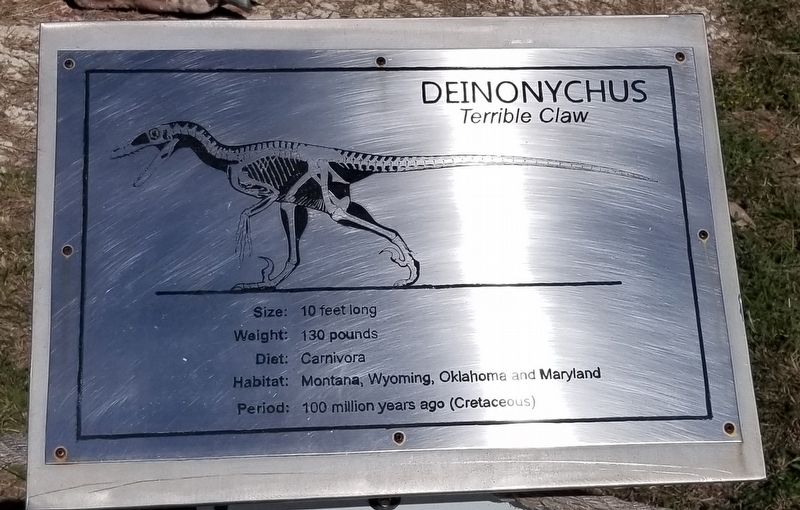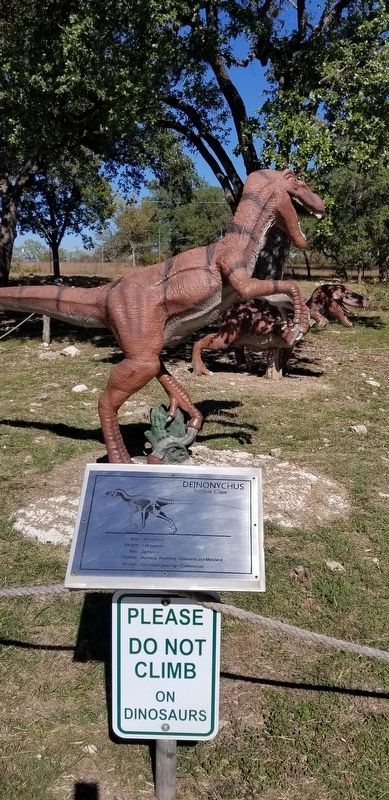Bandera in Bandera County, Texas — The American South (West South Central)
Deinonychus
Terrible Claw
Size: 10 feet long
Weight: 130 pounds
Diet: Carnivora
Habitat: Montana, Wyoming, Oklahoma and Maryland
Period: 100 million years ago (Cretaceous)
Erected by Bandera Natural History Museum.
Topics. This historical marker is listed in these topic lists: Animals • Paleontology.
Location. 29° 43.875′ N, 99° 4.06′ W. Marker is in Bandera, Texas, in Bandera County. Marker can be reached from Old San Antonio Road, 0.1 miles north of State Highway 16. The marker is located on the grounds of the Bandera Natural History Museum. Touch for map. Marker is at or near this postal address: 267 Old San Antonio Road, Bandera TX 78003, United States of America. Touch for directions.
Other nearby markers. At least 8 other markers are within walking distance of this marker. Dilophosaurus (here, next to this marker); Gastornis (a few steps from this marker); Pachycephalosaurus (within shouting distance of this marker); Mastodon (within shouting distance of this marker); Indricotherium (within shouting distance of this marker); Stegosaurus (within shouting distance of this marker); Smilodon (within shouting distance of this marker); Torosaurus (within shouting distance of this marker). Touch for a list and map of all markers in Bandera.
Regarding Deinonychus. There is a entrance fee to visit the Bandera Natural History Museum which allows you to walk through the dinosaur exhibits and markers.
Also see . . . Deinonychus.
Deinonychus (/daɪˈnɒnɪkəs/ dy-NON-i-kəs; from Greek: δεινός deinós, 'terrible' and ὄνυξ ónux, genitive ὄνυχος ónuchos 'claw') is a genus of dromaeosaurid theropod dinosaur with one described species, Deinonychus antirrhopus. This species, which could grow up to 3.4 meters (11 ft) long, lived during the early Cretaceous Period, about 115–108 million years ago (from the mid-Aptian to early Albian stages). Fossils have been recovered from the U.S. states of Montana, Utah, Wyoming, and Oklahoma, in rocks of the Cloverly Formation, Cedar Mountain Formation and Antlers Formation, though teeth that may belong to Deinonychus have been found much farther east in Maryland. Source: Wikipedia(Submitted on January 3, 2022, by James Hulse of Medina, Texas.)
Credits. This page was last revised on January 3, 2022. It was originally submitted on January 3, 2022, by James Hulse of Medina, Texas. This page has been viewed 201 times since then and 22 times this year. Photos: 1, 2. submitted on January 3, 2022, by James Hulse of Medina, Texas.

